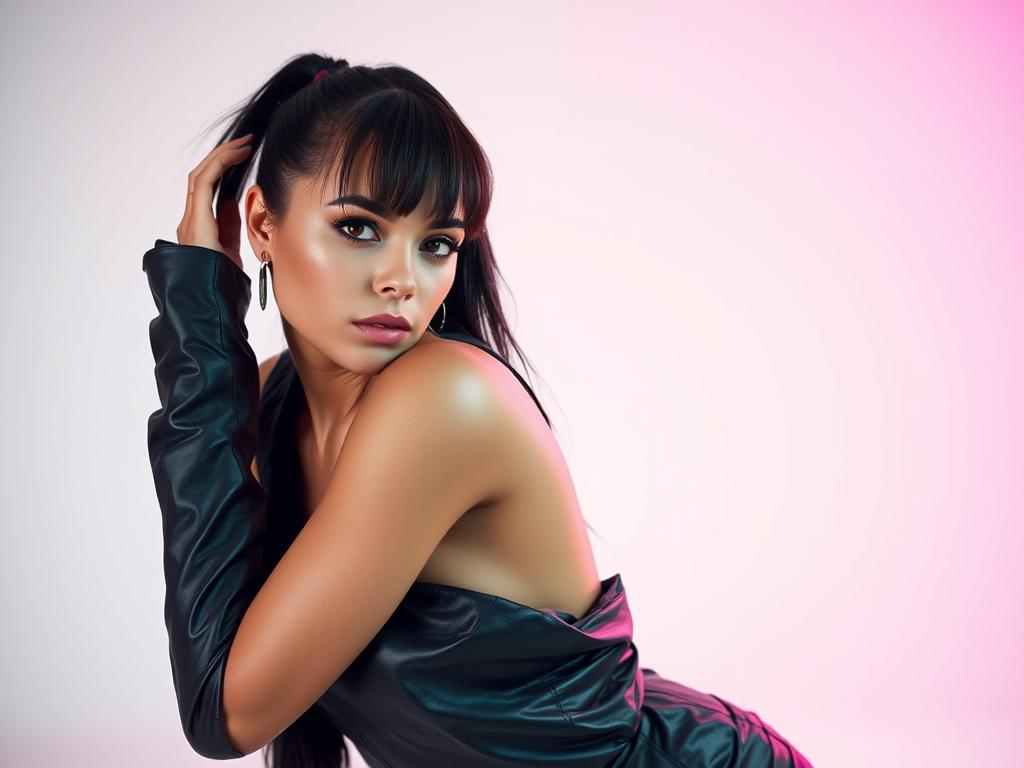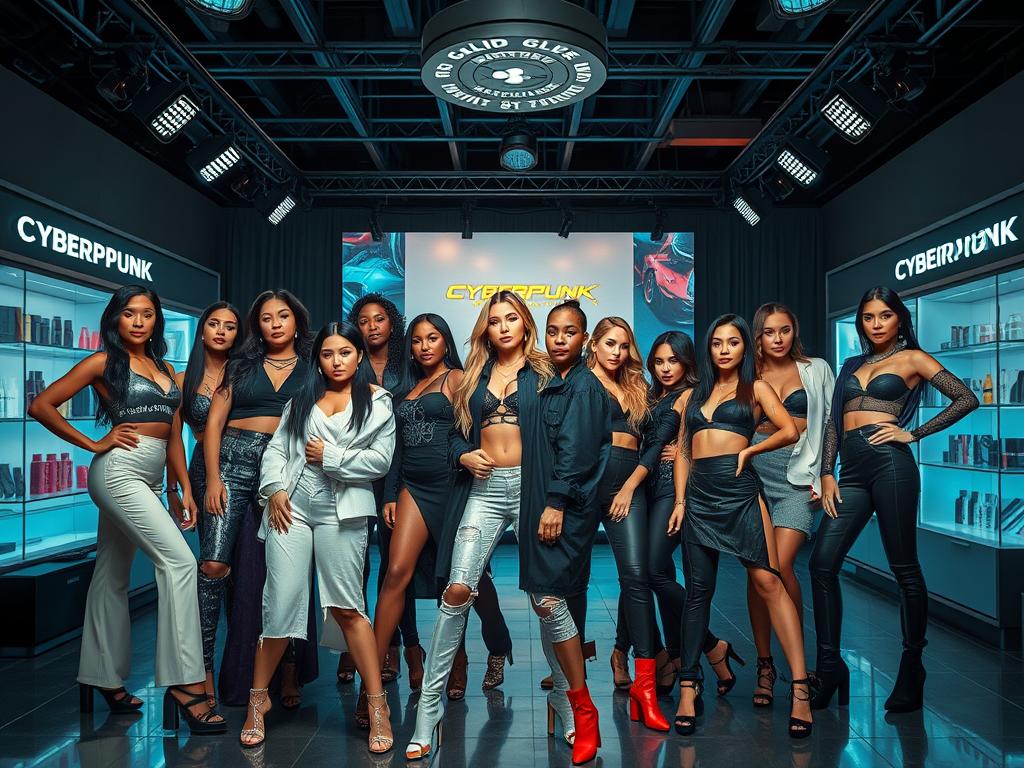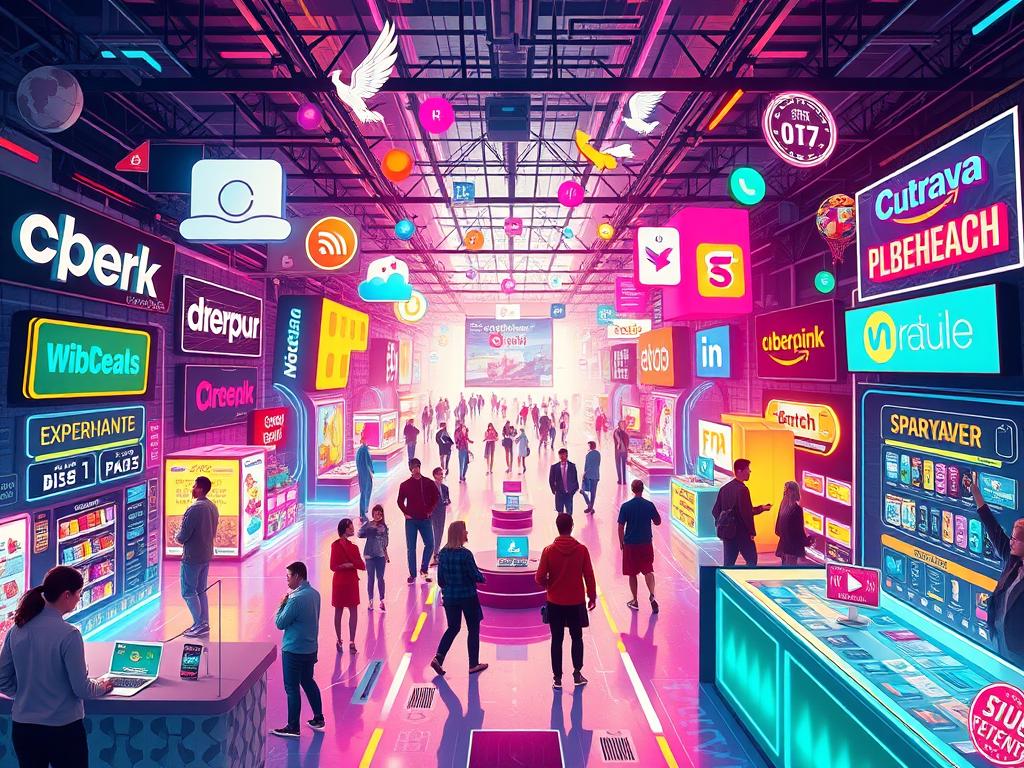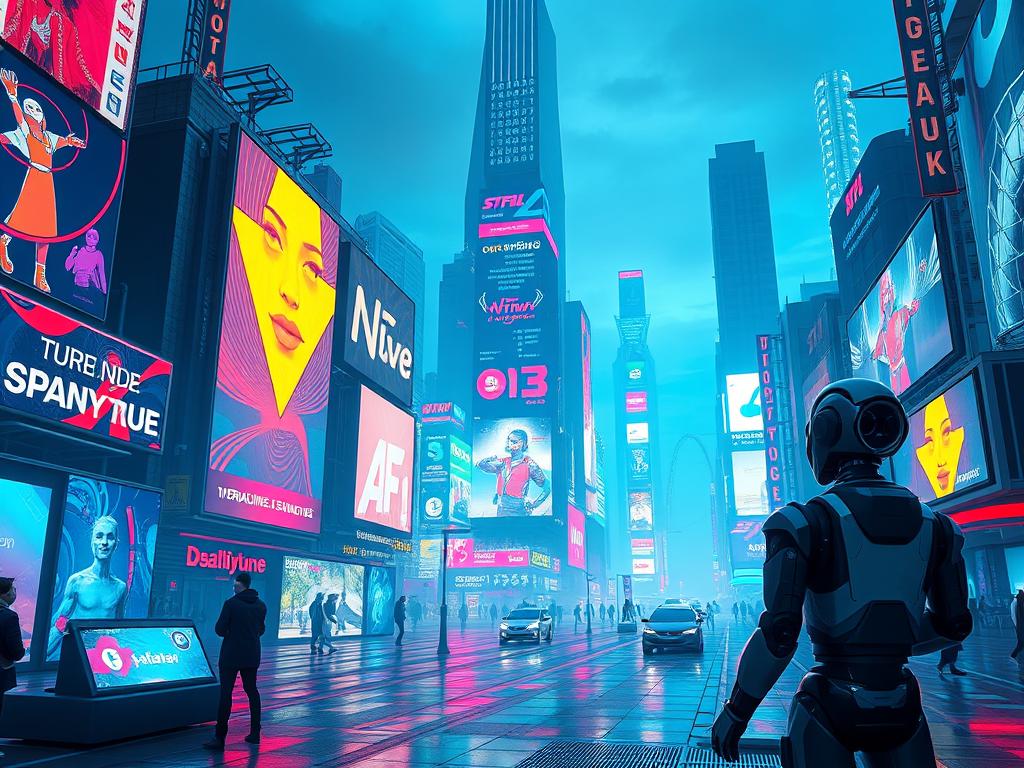The advertising industry depends significantly on models to showcase products and services across various sectors, including food, health care, education, and entertainment. Becoming an advertising model doesn’t confine you to the traditional stringent standards of runway models. This field offers more flexibility, making it accessible to a broader range of individuals and even animals. By capitalizing on the charm and uniqueness of real-life figures, advertisements establish a stronger connection with consumers.
To embark on a successful modeling career as an advertising model, you need to mobilize confidence, acting skills, and the capability to perform across different media platforms such as TV, newspapers, magazines, billboards, and digital devices. Established modeling agencies play a crucial role in promoting models to work with major clients like Barclays Bank, Royal Mail, Nintendo, and DFS. The combination of these elements can open doors to numerous modeling opportunities and significantly impact the connection between consumers and brands.
Engage with modeling agencies and leverage platforms like social media and blogs to gain insights into the modeling industry and increase your chances of landing valuable model gigs. With the advertising industry continually evolving, this could be your pathway to a dynamic and rewarding career.
Understanding Advertising Modeling
Advertising modeling, often synonymous with commercial modeling, serves as the cornerstone for print and digital campaigns. It encompasses a range of media including TV, newspapers, magazines, and online platforms. This field requires the ability to connect with consumers, aiming for a natural, approachable appearance that favors relatable beauty over high fashion.
What is Advertising Modeling?
Advertising modeling is a diverse field that requires various types of models to promote products and services across different media. The advertising model definition is broad and includes individuals of all ages, genders, and ethnicities. Unlike the high fashion industry, which has stringent requirements, commercial modeling is more inclusive, accommodating petite and plus-size models. The ultimate goal is to create a relatable and positive image for consumers, often capturing their attention through print campaigns and digital promotions.
Types of Advertising Models
The need for a range of models in advertising is evident across different industries and platforms. Here are some key types of advertising models:
- Print Campaigns: These models are often featured in magazines, billboards, bus stops, and shop windows. They are required to possess a photogenic quality that resonates with a wide audience. They also appear in ad campaigns that require diverse representation, featuring a mix of age groups and genders.
- Promotional Models: Often tasked with representing brands at events, trade shows, and conventions, promotional models need to be personable and approachable. They play a crucial role in direct consumer interaction and brand experience.
- TV and Digital Ads: These models appear in television commercials and online videos. Their role is to engage viewers and convey the product’s message compellingly and memorably.
To clarify, here’s a comparison of the high fashion and commercial modeling industries. This table summarizes the key differences:
| Attribute | High Fashion Modeling | Commercial Modeling |
|---|---|---|
| Restrictions | Strict – Tall and slim physiques | Relaxed – Includes petite and plus-size models |
| Media | Magazines, high-end runways | TV, newspapers, magazines, online platforms |
| Audience | Niche – Fashion enthusiasts | Wide – General consumers |
| Representation | Limited diversity | Diverse – Age, gender, ethnicity |
| Cost | High – Designer campaigns | Varies – Includes low-cost local ads |
Overall, commercial modeling offers a much more flexible and inclusive career path than high fashion modeling, making it a viable option for many aspiring models. Understanding these nuances can significantly enhance your prospects in the advertising modeling industry.
Skills and Qualities Required
In the competitive world of advertising modeling, understanding the essential model qualities and acquiring the required skills for modeling are crucial steps toward success. Aspiring models must develop a combination of distinct characteristics and abilities to excel in this field. Confidence, charisma, adaptability, and versatility are fundamental traits that greatly influence a model’s career trajectory.
Confidence and Charisma
Having strong modeling confidence is indispensable for an advertising model. Confidence allows you to perform consistently under pressure, especially in high-stakes situations like live shoots and runway shows. Charisma, on the other hand, helps capture the audience’s attention and creates a lasting impression. Building confidence comes from repeated practice and positive reinforcement. You can improve your modeling skills by attending workshops and engaging with professional photographers who offer constructive feedback.

Adaptability and Versatility
Advertising models often encounter diverse roles and scenarios, making adaptability a vital attribute. Being adaptable means quickly adjusting to various requirements, ranging from fit modeling to embodying different personas for various brands. Versatility allows you to appeal to a broader range of clients, enhancing your marketability. To improve modeling skills involving adaptability, consider taking acting classes or participating in varied modeling assignments. These experiences will hone your ability to switch effortlessly between different styles and characters, further boosting your modeling confidence.
Ultimately, the blend of these model qualities, combined with the constant desire to improve modeling skills, sets the foundation for a fruitful career in advertising modeling.
Steps to Get Started in Advertising Modeling
Launching a modeling career in the advertising world involves a strategic approach. The first step is to develop a strong modeling portfolio, which serves as your visual resume. To create a diverse and compelling portfolio, collaborate with professional photographers who can help capture your best angles and unique attributes.
Understanding the industry’s requirements is key. Runway models typically need to be between 5’9″ and 6’0″ for females, and over 6’0″ for males. Catalog and fashion print models usually are within the 5’8″ to 5’11” range. If you meet these criteria, your chances increase. Additionally, don’t overlook the increasing demand for fitness models, who promote athletic wear and fitness companies, or commercial models with a relatable, girl-next-door appeal.
Networking is another crucial element. Attend workshops and industry events to meet other models, photographers, and agents. Not only does this expand your connections, but it also provides practical insights through direct feedback and firsthand experiences. Early exposure through networking often leads to casting tips and opportunities for modeling auditions, making it easier to break into agency rosters.
Financial planning is often necessary as the modeling industry can be both mentally and financially taxing. While high-quality, professional photos are essential, they can also be costly. Seek photographers willing to do TFP (Trade for Print) sessions to manage your photo shoot costs. Always be cautious with reputable modeling agencies, as they won’t ask for upfront payments but instead evaluate your potential based on your portfolio.
| Modeling Type | Height Range | Key Attributes | Common Industries |
|---|---|---|---|
| Runway | 5’9″ – 6’0″ (females), 6’0″ + (males) | Tall, lean | Fashion shows, high-end clothing brands |
| Catalog | 5’8″ – 5’11” | Versatile looks | Mail-order merchandise, retail advertising |
| Fitness | Variable | Physically fit | Sportswear advertisements, fitness campaigns |
| Commercial | Variable | Relatable, everyday appeal | Beauty products, lifestyle brands |
Finally, make sure to manage your social media presence carefully. Use trending hashtags to increase visibility, refrain from posting food pictures, and avoid excessive use of filters on your images. This disciplined approach can boost your credibility and attract potential clients, further aiding in your modeling career.
How To Become An Advertising Model (Note: This section seems redundant and identical to Section 1. Assuming that it might be an error in the outline, I’ll skip to Section 6 for content creation.)
Understanding how to become an advertising model is often enhanced by aligning with a reputable modeling agency. A good agency can guide you through the complexities of the advertising industry and provide crucial support for your career. This section covers the importance of finding an excellent agency and the resources they typically offer.
To start, finding a reputable agency is paramount. Many reliable agencies can be found by conducting thorough research. Begin by identifying agencies that have a strong presence in the advertising modeling sector. Researching online reviews and testimonials can be a good indicator of their credibility. By partnering with a well-established agency, you can open doors to high-profile projects that might otherwise be inaccessible.
- Check for certifications and memberships in professional modeling associations.
- Consult with current or former models associated with the agency.
- Investigate if the agency has a proven track record with clients and brands you admire.
Once you’ve joined a reputable agency, you’ll gain access to a wealth of resources. For instance, many agencies offer workshops to hone your skills, ranging from posing techniques to understanding market trends. In addition, agencies usually provide a portfolio of opportunities that can significantly elevate your career.

Moreover, it’s worth noting that statistics reveal a significant trend in how modern tools can enhance your modeling career. As of the symposium held on May 14, 2016, in Stillwater, Minnesota, experts like Sir Roger Penrose and Scott Aaronson emphasized that AI is becoming increasingly relevant in fields such as modeling. For example, 76% of surveyed students find tools like ChatGPT helpful for researching topics rapidly, and 82% believe it improves study efficiency. This technological edge can similarly boost your modeling efficiency by helping prepare you for auditions and stay updated with market trends.
| Resource | Benefit |
|---|---|
| Workshops and Training | Enhances posing techniques and market knowledge |
| Industry Connections | Access to high-profile projects and auditions |
| Modern Tools | Use of AI for researching and preparing for roles |
Ultimately, aligning with a reputable agency provides a sturdy foundation to navigate the modeling world. Leveraging their network and the growing power of AI resources can set you on a path to a successful advertising modeling career.
The Role of a Modeling Agency
A credible modeling agency acts as a catalyst, propelling your career forward. Aligning with top model agencies can open doors to numerous opportunities, including work with renowned brands like Barclays Bank, Royal Mail, Nintendo, and DFS. To truly grasp the extent of the modeling agency roles, it’s essential to understand how they ensure reputable modeling and leverage various agency benefits to foster your career.
Finding a Reputable Agency
Finding a reputable agency is pivotal. Modeling agencies actively scout for potential models through various channels like fashion shows, modeling schools, and social media platforms. Increasingly, model scouts turn to Instagram, engaging with aspiring models and browsing through hashtags to identify new talent. The competition is fierce, with agencies receiving thousands of applications yearly. Scouts primarily focus on height and portfolio images when evaluating applications, highlighting why presenting your best self is crucial.
Agency Support and Resources
Once associated with an agency, models gain access to numerous resources and support systems. These include runway training, which is vital in teaching walking techniques, posing, and expressing confidence on the catwalk. The professional network provided by top model agencies creates personal and exclusive connections between commercial clients and models. Modeling agencies invest in comprehensive training for models, such as catwalk skills and public speaking, to enhance marketability and ensure that models are well-prepared for various assignments.
Contracts play an essential role in defining the terms and conditions of modeling work. Modeling agencies negotiate these contracts to guarantee fair treatment and appropriate compensation. Moreover, they handle bookings and financial guidance, thus easing the complexities models might face when working internationally. With technology and social media revolutionizing talent scouting, agencies can now discover new talents globally and build personal brands more effectively.
Finally, modeling agencies are committed to promoting diversity within their talent pools and implementing policies to support the health and well-being of models. This includes addressing body image pressures and mental health, ensuring a supportive and nurturing environment for all models. The combination of these agency benefits ensures reputable modeling opportunities that promote long-term career growth and success.
How Does Advertising Play a Role in Becoming a Successful Model?
Becoming a successful model requires visibility, and advertising shaped markets by creating opportunities for models to showcase their talent globally. Campaigns connect models with brands and audiences, boosting recognition and influence. Through strategic ads, aspiring models gain exposure, solidifying their presence in competitive industries and paving the way to lasting success.
Conclusion
Breaking into the modeling industry and establishing a successful modeling career in advertising is a multifaceted endeavor that involves more than just a pretty face. By understanding the various types of advertising models, you can better position yourself in the market. Developing essential skills and qualities like confidence, charisma, adaptability, and versatility is crucial in this highly competitive industry.
Taking the right preparative steps can make a world of difference. This includes creating a standout portfolio, networking with industry professionals, and participating in relevant modeling gigs to build experience. Moreover, aligning yourself with a reputable modeling agency can provide you with the necessary support and resources to navigate the industry. Agencies can offer invaluable guidance and opportunities that might be difficult to secure on your own, focusing on your growth and ensuring that you’re always headed in the right direction.
With a strategic and determined approach, breaking into the modeling industry can transition from a distant dream to a concrete reality. As you aim for billboards and digital campaigns, remember that the journey requires a balance of industry knowledge and steadfast perseverance. Leveraging professional modeling advice while staying informed on the latest market trends will serve as vital instruments in carving out a rewarding and successful modeling career.








